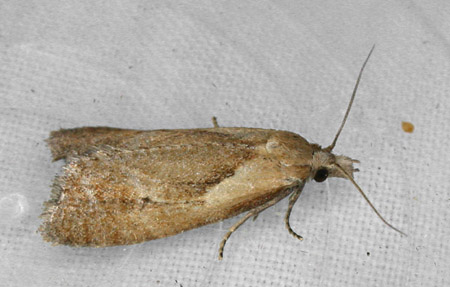Phtheochroa inopiana
Checklist Number49.092 [B&F: 0921]
Verification
Record will normally be accepted but photo evidence may be required - check with CMR if not sure of identity
Classification
| Family: | Tortricidae |
| Subfamily: | Tortricinae |
| Genus: | Phtheochroa |
| Species: | inopiana |
| Authority: | (Haworth, 1811) |
Local in dry pastures, fens and marshes, and on river-banks and other damp areas throughout England and Wales. Reasonably common in Hampshire, with the south-east quarter of the county responsible for more than two thirds of the total records on the county database, and with no indication of any significant decline in numbers, but very rare on the Isle of Wight. Wingspan 17-22 mm. The relatively large size of this species and the obscure markings and drab coloration of the forewing are characteristic [Bradley]. Larva feeds within roots of Common Fleabane and Field Wormwood, living within a silken tube or tent.


The abundance in each month is indicated as follows:
 No records
No records Very occasional
Very occasional Irregular
Irregular Uncommon
Uncommon Off-peak, but not unusual
Off-peak, but not unusual Off-peak, but not unusual
Off-peak, but not unusual Main flight time
Main flight time| J | F | M | A | M | J | J | A | S | O | N | D | |
|---|---|---|---|---|---|---|---|---|---|---|---|---|
| Adult |  |  |  |  |  |  |  |  |  |  |  |  |
| Larval |  |  |  |  |  |  |  |  |  |  |  |  |

